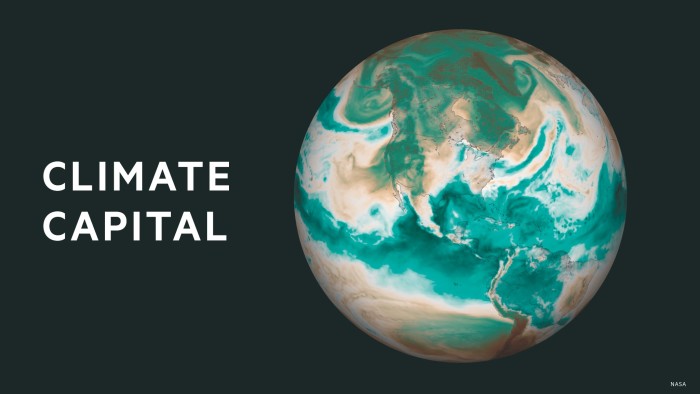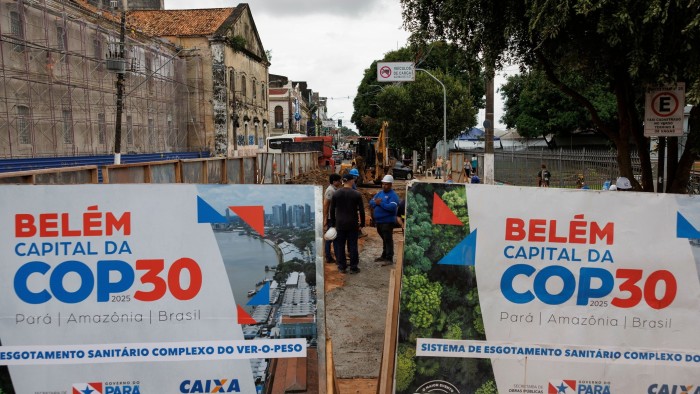Stay informed with free updates
Simply sign up to the Climate change myFT Digest — delivered directly to your inbox.
Scientists’ fears of a breach of the 1.5C warming level set down in the Paris accord escalated, after the latest data showing the monthly average global temperature had topped the threshold for 21 out of the past 22 months.
The second hottest April was recorded at 14.96C — or 1.51C above the estimated 1850-1900 average and just 0.07C cooler than the record April of 2024, the European earth service Copernicus said.
The global average temperature over the 12-month period to the end of April was 1.58C above the pre-industrial level.
The continued warming comes as efforts to tackle global warming caused by greenhouse gas emissions are set back by competing pressures on governments to respond to trade, defence and other economic demands.
Under the landmark Paris accord, almost 200 countries agreed to limit the global temperature rise to well below 2C and ideally to 1.5C above the pre-industrial level. Presently, the rise above this level does not represent a breach of the accord, which is measured over a period of more than two decades rather months.
But Richard Allan, climate science professor at the University of Reading, said the record heat for almost two years means it “now appears inevitable that Earth will breach” the lower target.
This meant more frequent “hot, wet and dry extremes of weather”, he said, and “rapid cuts in greenhouse gas emissions across all sectors of society” were needed to limit the global temperature rise to 2C.
Last month, wetter than usual conditions affected the Alps as well as midwest USA and large swaths of northern Australia and central South America, leading to floods, landslides, avalanches and associated damages, Copernicus said.
Surface temperatures were predominantly above average for April in eastern Europe, parts of Russia, Kazakhstan and Norway, as well as in west-central Asia and part of Australia.
Scientists had expected that the emergence of the La Niña phenomenon across the Pacific earlier this year would help cool the planet. But the National Oceanic and Atmospheric Administration said in April that La Niña had ended after only a few months, with the tropical Pacific now in neutral conditions.

The UN climate change chief Simon Stiell warned on Wednesday the world was “on a trajectory to 3C” above pre-industrial times — a level at which scientists have warned of devastating environmental and human consequences.
Speaking in Copenhagen where ministers and officials were taking part in talks ahead of the UN COP30 climate summit in Brazil, Stiell urged more rapid action and noted that without the Paris accord the projected temperature rise would have been much higher — at up to 5C.
The International Energy Agency this week said levels of methane — the main component of gas — were near an all-time high in 2024, largely as a result of fossil fuel production. Methane traps more heat for a shorter time in the atmosphere than carbon dioxide, and is regarded as the easiest near-term way to deal with emissions.
Data visualisation by Jana Tauschinski in London
Climate Capital

Where climate change meets business, markets and politics. Explore the FT’s coverage here.
Are you curious about the FT’s environmental sustainability commitments? Find out more about our science-based targets here
